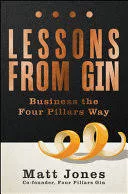Supplement: Special Report
Expanding business through new product development
What to consider when assessing new product expansions

Expansion is an essential part of any solid growth strategy. While it’s important to expand into new sales channels and scale your operations, you also need to expand your product lines to truly achieve sustainable growth. That being said, many factors can influence the decision to expand your product offerings. Timing, customer demand, competitive landscape and manufacturing costs are just some of the things to consider when you’re thinking about developing new products. With the right processes in place, however, product development is a highly effective way to scale your business.
WHY YOU SHOULD EXPAND YOUR PRODUCT LINE
When you have the time and budget, developing new products is a great way to increase your profits and grow your brand. Here are some key benefits of expanding your product lines:
Reach new customers and break into new markets: Offering more products gives your business the potential to appeal to a broader audience. Appealing to more prospective customers allows the ability to sell on more channels or in more stores.
Diversify your offerings: It’s easy for one SKU to get lost on a shelf in a sea of similar products. Having diversified products creates a recognizable brand as opposed to a seller of a one-off product. Creating new products also enables you to fill in any existing gaps in your current offerings.
Respond to customer demands: Whether you are selling beverages or beauty products, novelty is what keeps customers interested. Especially if you’re seeing multiple requests for a particular product or variant, you already have validation it will sell.
EXPANSION CHALLENGES
Creating new products can be exciting and rewarding, but attempting to expand your product line before you’re ready can negatively impact your business. Here are some challenges to consider before you start dreaming up your newest product:
Cost of time and resources: Creating and launching a new product takes a lot of time away from running the rest of your business. Although this can definitely be time well spent, it’s important to ensure your readiness and need for new products before making the decision toward product development.
Potential for cannibalization: With the excitement of new products can come a decline in sales for older products. Keep in mind that when you launch a new product, you’ll most likely see this decline, so prepare accordingly.
Added inventory to manage: The more you add — whether in sheer quantity of products or in variations — the more difficult it is to manage inventory. Be sure to have inventory management software in place so you don’t lose loyal customers due to out-of-stocks or overselling.
How to Navigate the Product Development Cycle: Once you decide it’s the right time to expand your business through product development, many factors should be considered. Here are some recommendations for successfully navigating the product development cycle.
IDEATION
The best place to start the new product development process is by mining customer needs. Solicit feedback on what your customers love about your product(s) and what they would like to see moving forward. Before you spend time analyzing the minute details of a product, have a solid understanding of what actually matters to your customers. There’s no need to spend time and money on extra buttons or zippers if customers are perfectly satisfied with the original design. Once you have a clear direction that is based on demand, identify whether there are viable market opportunities for your new product. You can do this by tracking industry trends and assessing the competitive landscape for similar products that already exist.
RESEARCH AND DEVELOPMENT
Once you decide to move forward with your idea for a new product, it’s time to think about the logistics that go into creating it.
Sourcing Material and Choosing Vendors: It’s tempting to base decisions regarding materials and vendors on price, but it’s true you get what you pay for. Although you need to consider competitive pricing and your ROI, make sure you thoroughly assess your options before making a decision solely based on price. Tradeshows and industry recommendations are great places to start your research. Many of Stitch’s customers recommend physically visiting any factory or warehouse before deciding to partner with them.
Return on Investment (ROI) Analysis: When you think about your return on investment, make sure you’re thinking of pricing holistically — including overhead costs. Consider everything from shipping to employee wages to the cost of warehouse storage and even the cost of marketing the product. Only when you have a detailed look into what the product will actually cost you to make, store and deliver, can you get an accurate picture of your ROI.
Prototyping: Before you invest in manufacturing, packaging and marketing hundreds or thousands of items, consider testing several iterations on a sample of your target audience.
POSITIONING YOUR PRODUCT
When thinking about effectively positioning your product, it’s important to know your customer. Do they care more about brand or price? If it’s more important to you to establish a brand than sell a ton of products quickly, you’ll want to start by making fewer items and invest more heavily in your marketing strategy. Also, think about where you want to sell your product and how it fits into the marketplace. Where do your customers shop? If the answer is a channel or store that’s new to you, research what goes into selling there and make sure it makes sense for your business.
PRICING STRATEGIES
While assessing competitors’ pricing is a great place to start, there is a lot more to the economics behind choosing the best price for your product. You can always iterate on pricing, so try out a few strategies and decide what works best for your products and business.
Focus on bestsellers: You can play a bit more with the margins on your top sellers knowing that with these, an extra dollar or two of profit has more potential than spreading out pricing changes across your entire product catalog. Typically with product sales, 80 percent of your revenue is driven by 20 percent of your products.
Bundling: Bundling can be an especially effective pricing strategy when you’re launching a new product. Create a special deal in which you pair your new product with a bestseller. This introduces customers to your new product while giving them the safety of something they already know and love.
Price adjustments: Rather than spending time price optimizing everything you sell, focus on what’s really moving the needle. Make price adjustments to highest selling items, as these changes will have the greatest impact. There can be a tendency to zero in on how many products sold, even though in some cases you can make more money by selling fewer products when you slightly raise your prices or reduce shipping and storing costs.
LAUNCHING A PRODUCT
The best information you can get on product development comes from the data you’ll get after you launched a new product. Although industry trends from experts can be helpful, each business is unique and you’ll learn best from iterating on your own process.
Customer feedback: The goal of creating a new product should be to meet your customer’s needs based on something that was lacking from your original product offerings. Hearing directly from the customer whether or not you achieved this goal is invaluable. Using prototypes for customer tests and focus groups gives you the opportunity to receive feedback in time to make changes before you’ve invested heavily in your new product development and launch.
Promoting your product: Now that you’ve created a new product, don’t underestimate the time and effort required to make sure it is seen by your target audience. If you want to sell in brick-and-mortars, you might need to do product demos or pay for promotional materials to be featured in the store. Selling online requires different types of marketing strategies, from buying ads or banners to sending free products to influencers. The good news is, with all the time and effort you put into developing your product, the end result is hopefully something that will pay for itself — and make you money — once the word spreads to your prospective customers.
Looking for a reprint of this article?
From high-res PDFs to custom plaques, order your copy today!






